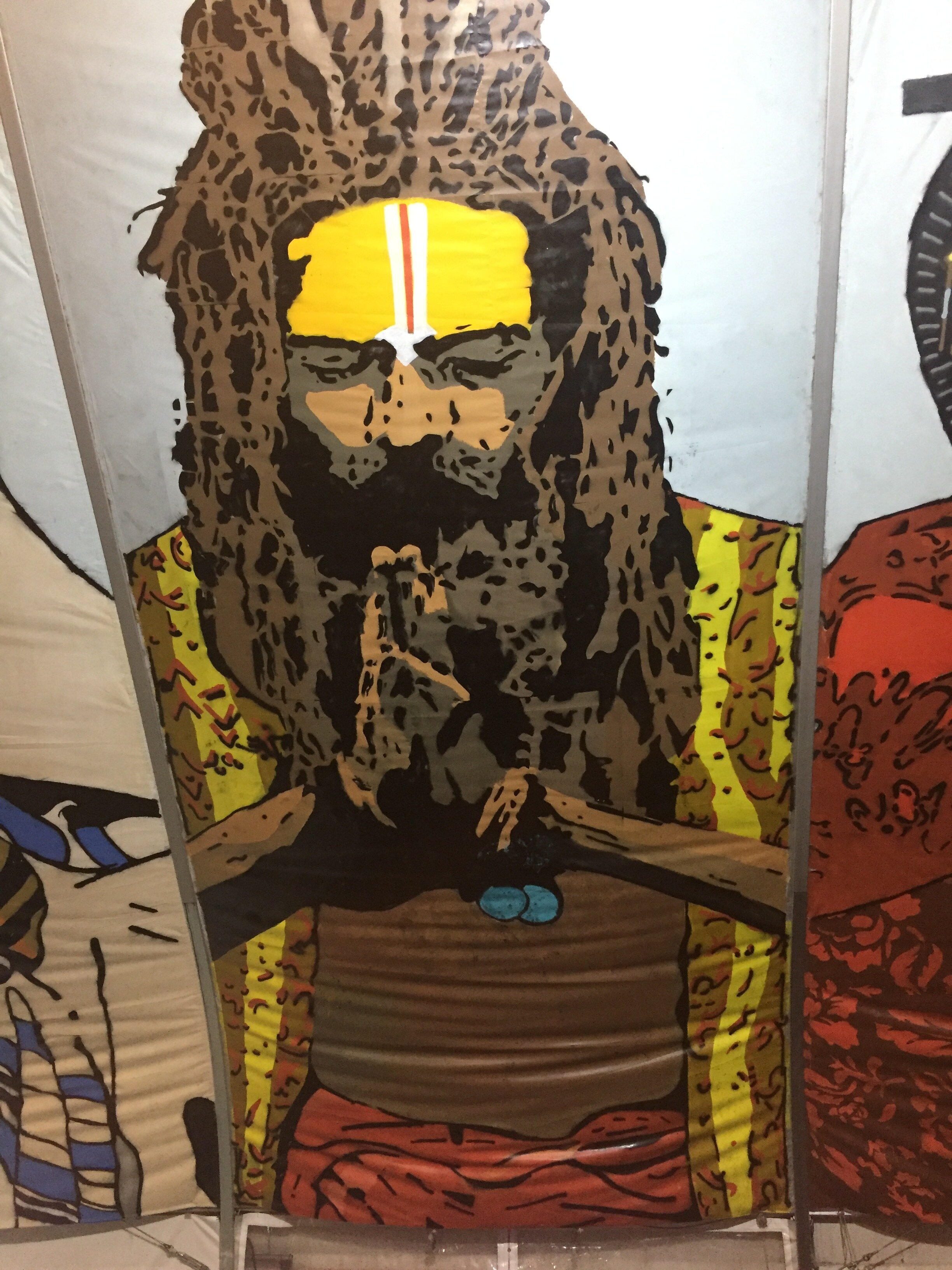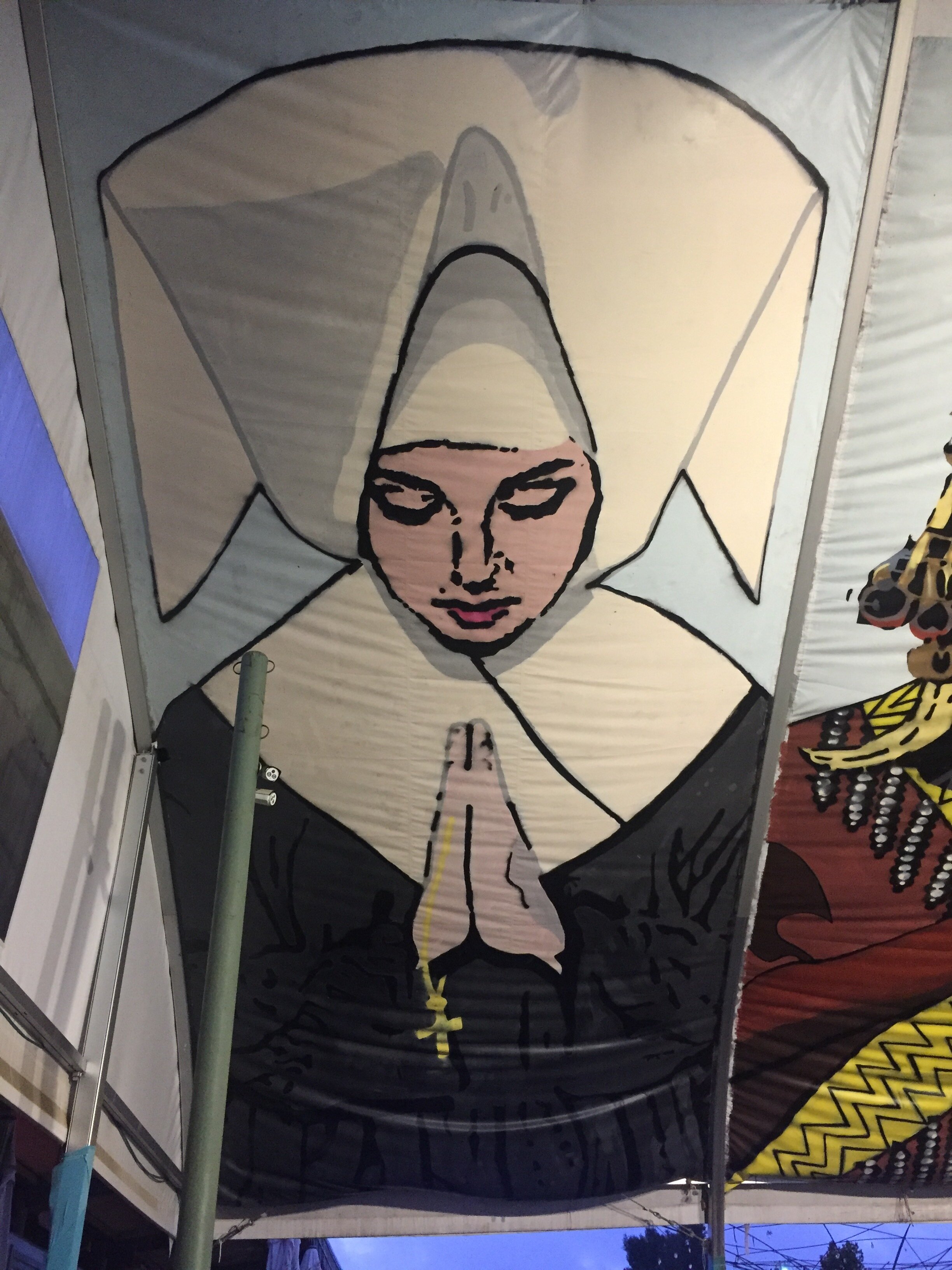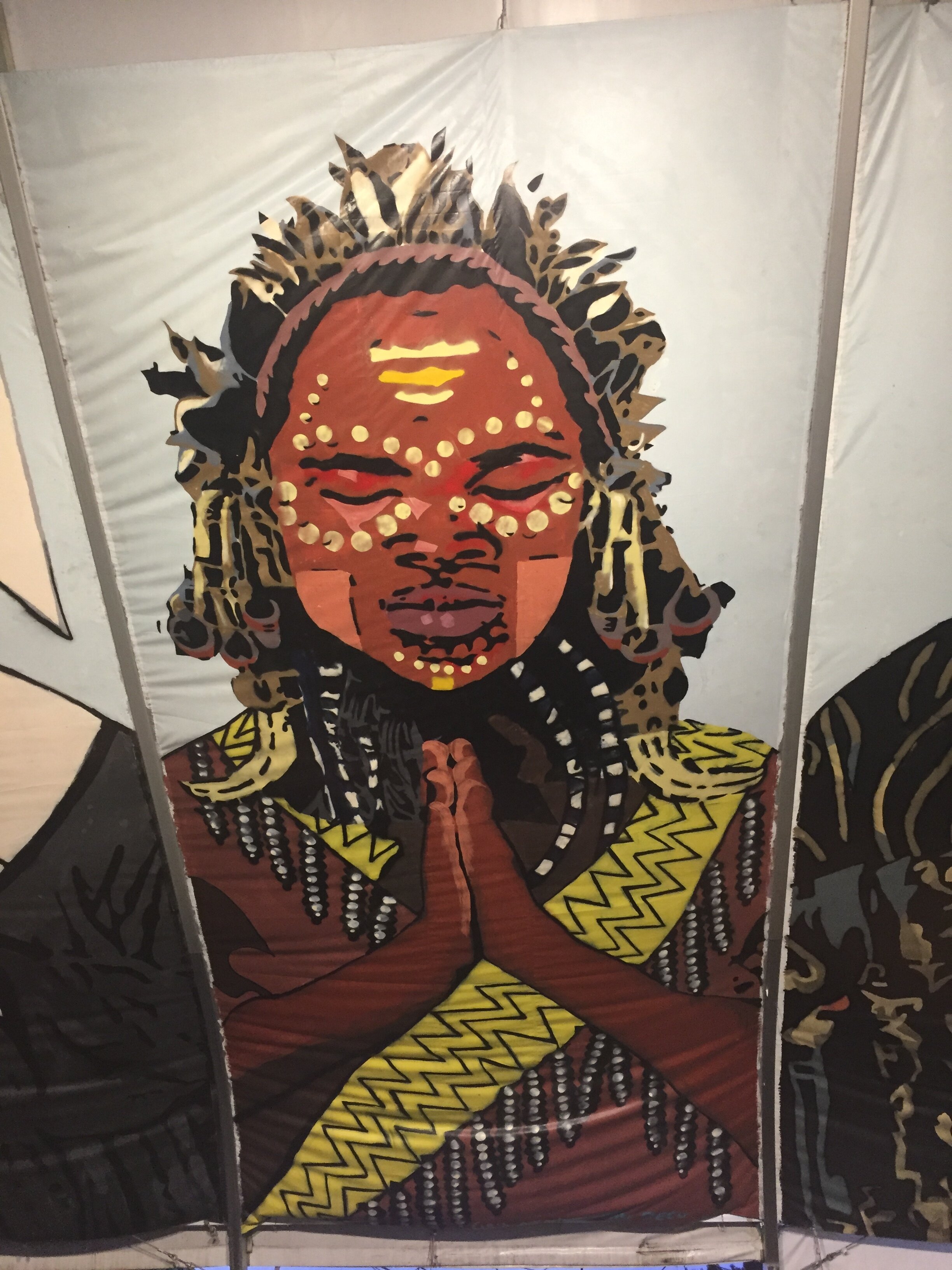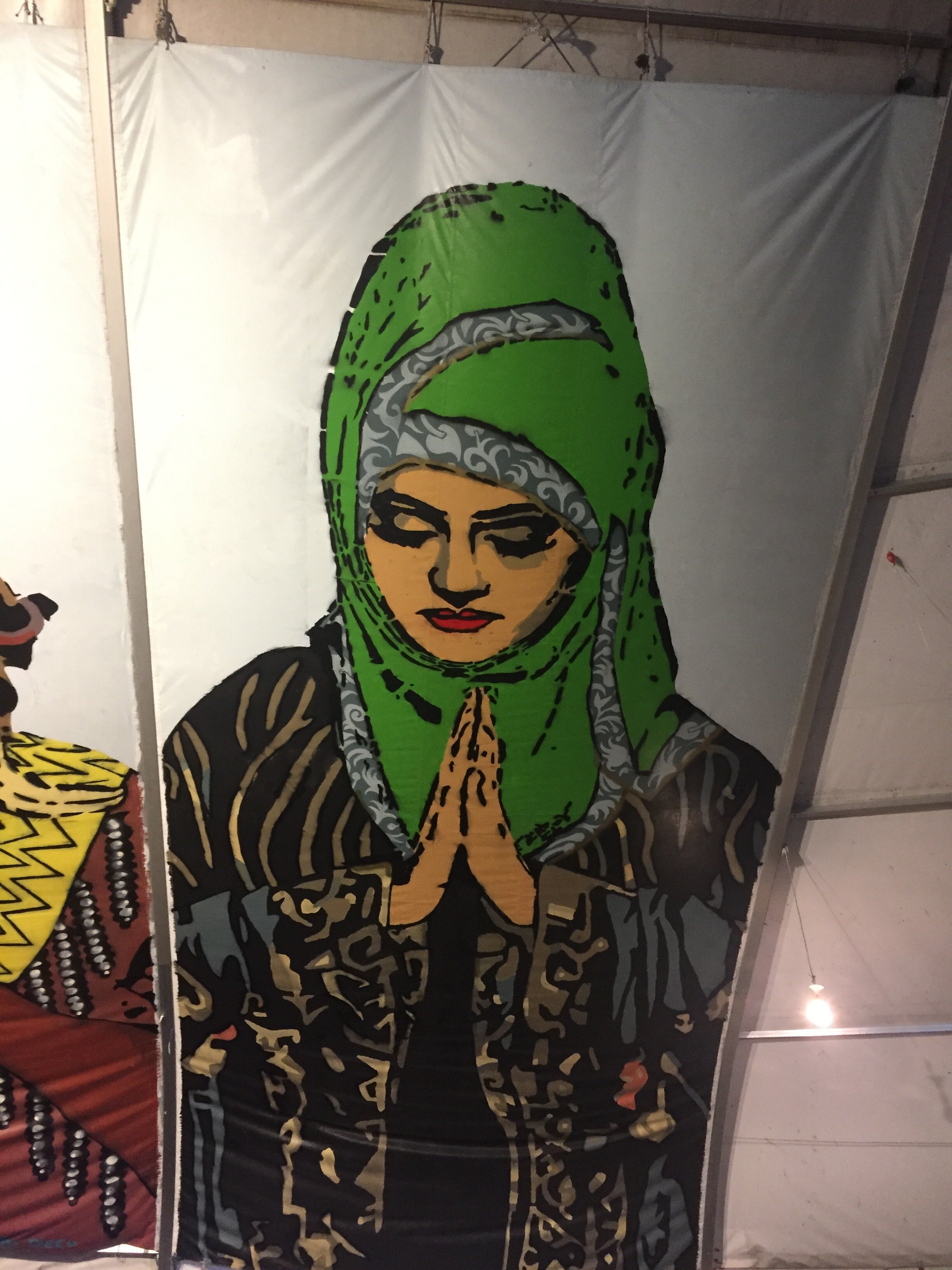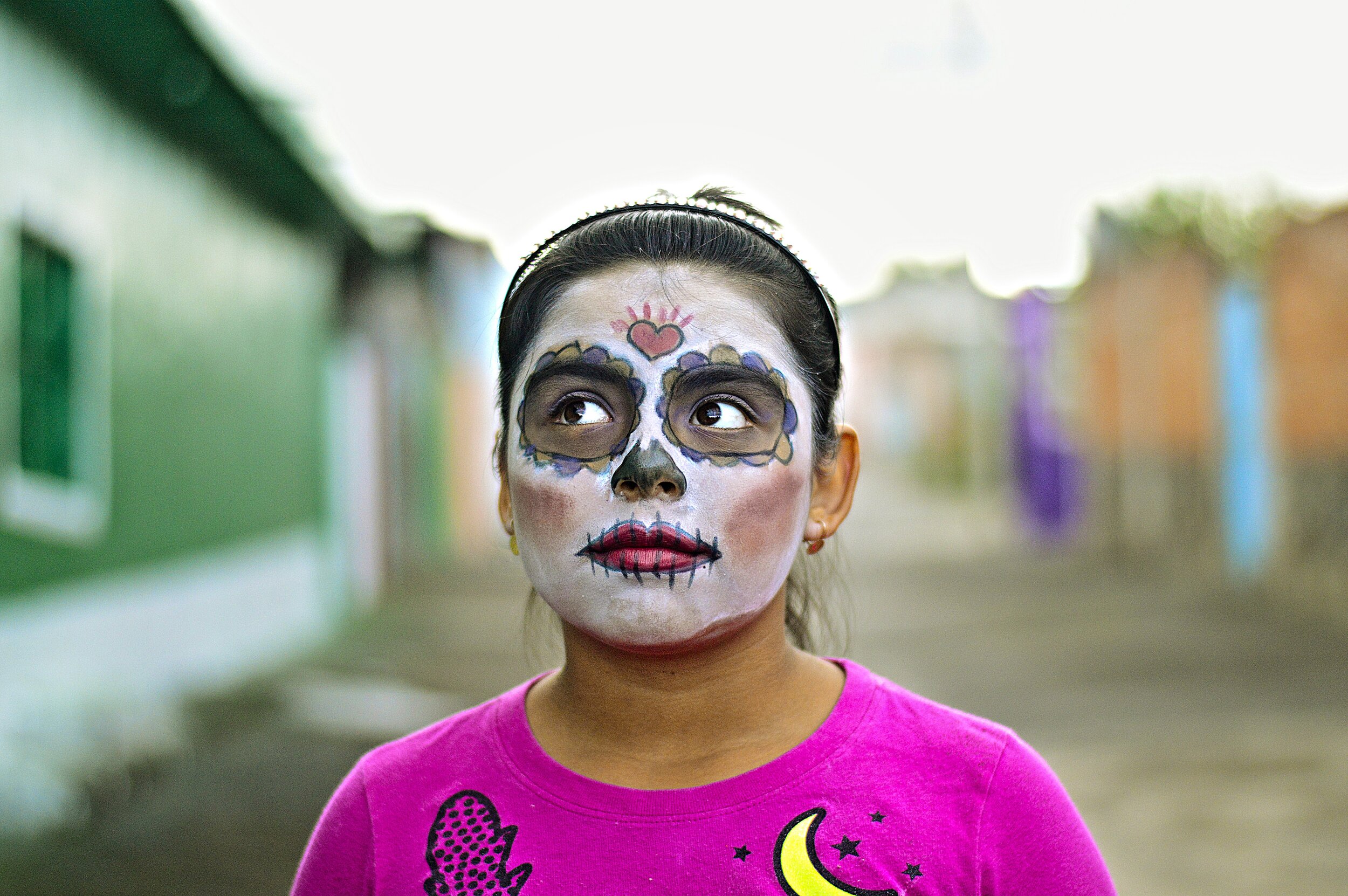I was a little surprised when the believer’s relationship to clothing came directly in the cross hairs of conversation following the Super Bowl Half-Time show in February. Issues of Latin culture, pop culture, sensuality, sexual purity, and modesty contributed to a charged conversation. World Outspoken’s Emanuel Padilla chimed in with an article addressing many of these issues, raising important questions about the Christian’s perspective of modesty in relation to culture. Initially, I believed my surprise was rooted in a Christian modesty ethic which framed my thinking to expect “the world” to have a different relationship with clothing than my own. Then I read Lauren F. Winner’s Wearing God and realized my relationship to clothing had shifted—no longer primarily formed by a cultural modesty ethic (Christian or otherwise) but something more.
Modesty conversations are not new to the church and arise frequently when believers make an effort to draw distinctions between Kingdom culture and ungodly elements of world cultures. This theology of “worldliness” is found frequently in fundamentalist church circles, with James 1:27 cited as a supporting text for a believer’s physical, tangible distinctness from the world. A helpful example of this is found in Anabaptist denominations, such as the conservative Mennonite or Brethren. These believers hold to standards of dress which set them apart from broader society, choosing sex differentiated clothing (skirts and dresses for women, pants for men) and clothing that is either homemade or what is considered the most modest of what is available. In choosing to dress in a way that is distinct from world cultures, clothing becomes a marker of identity and a communicator of holiness.
The Super Bowl discussion and the Anabaptist modesty ethic seem to be outliers from the average believer’s wardrobe considerations. Nonetheless, the Church through time has wrestled with its relationship to clothing as a cultural artifact—forming, at best, a muddled conversation. When it comes to clothing, believers may have missed a step on the way to correct practice. We have constructed our “correct belief” based on culture, forgetting that for the believer, clothing is not first a cultural artifact at all. Clothing is first and foremost a person—the person of Jesus Christ.
In her book Wearing God: Clothing, Laughter, Fire, and Other Overlooked Ways of Meeting God, Dr. Lauren F. Winner presents several metaphors for God frequently neglected in Christian thought. Winner proposes that some scriptural metaphors (e.g. shepherd, light) have become the sole ways in which believers imagine God, leaving the Church with a “truncated relationship” with her multi-faceted, unfathomable Lord.[1] One of these forgotten metaphors is clothing. Drawing from a robust biblical and historical-cultural theology, Winner brings newness to Paul’s declaration to the churches of Galatia: “For all of you who were baptized into Christ have clothed yourselves with Christ.”[2] Beginning in Genesis and concluding in the epistles, Winner points out that God clothes us, God is our clothing, and God invites us into clothing others.[3]
God Clothes Us
Clothing is both identity shaping and communicative. As an identity shaping artifact, clothing acts upon its wearer, forming him or her to its likeness. Winner explains that “fashion” is not only a noun, but also a verb, meaning to mold or to shape.[4] When choosing a variety of clothing one can “play at being a different kind of self,” because the clothing we choose fashions us into different people.[5] I am reminded of this when co-workers do not recognize me in the gym. I am molded by my fitness attire to a different me, an athletic, possibly trendier version of my typical simply dressed self. My gym clothes act upon me, shaping my identity. Clothing also shapes communal identity. Winner uses a classic example of children’s school uniforms, which define community through the elimination of differences.[6] Common clothing sustains a common identity.
As God tenderly dressed Adam and Eve with clothing of skins before they left the garden, we as believers have been dressed by God with Christ. How then is our identity, our very self, being shaped by the Person we wear each day? How does Christ act upon us in such a way that fashions both our personal and communal identities? As Winner candidly states: “I let my Talbot suits and my vintage shirts remake me in their image. I want to let Jesus do the same.”[7] Church culture aptly reminds me of the ability which clothing as a cultural artifact has to shape my identity away from holiness. Yet it frequently neglects to lay proper emphasis on my original clothing—the person of Jesus Christ, who daily shapes my identity, personally to Himself, and communally to the image of His Bride.
God is our Clothing
Clothing is also communicative. Winner looks back to mourning clothes, commonly worn by widows just decades ago. A widow of the 1920’s would wear mourning clothes for months after the loss of her husband. This black dress, Winner explains, would convey to the woman’s community her state of mourning.[8] The clothing did not cause the woman’s mourning, but rather communicated her state, prompting an appropriate response (careful attention and kindness) from those with whom she interacted.
Women in particular are warned to consider the communicative power of clothing. As a Christian woman, slut shaming takes its own vicious form as women criticize women of leveraging sex appeal in their wardrobe choices. Men also are criticized, often for appearing effeminate. Gender-norms and sexuality aside, clothing also communicates economics, status, and ethnic culture. The very nature of clothing to maintain communal identity also works to construct boundaries and communicate division.[9]
Lost in this discussion is the person of Christ bound daily to the very being of believers. Winner brings this again to the forefront, discussing the communicative nature of God-as-clothing. She states: “What we are asking for, of course, is not clothing that is more articulate, but that our disposition—which is indeed on display, often to a greater extent than we wish—would be more congruent with the Jesus whom we wear.”[10] Both identity shaping and communicative, the person of Christ acts upon His children, shaping them to His image and conveying through them His personhood. Jesus is our primary clothing, eclipsing any cultural artifact we may pull out of the closet on a Monday morning.
God Invites us to Clothe Others
Contrary to most clothing discussions, Winner lands her argument in the openness of the gospel and our mandate to clothe others. Winner suggests we are involving ourselves in a “choreography of divine action” when we follow God’s act of providing physical clothing[11] Citing Mathew 25 and James 2, Winner explains that Jesus holds up clothing others as a “basic norm, a test even, for discipleship and hospitality.”[12] This theology of clothing that Winner suggests does not separate us from those who need Christ. This theology asks us to mimic God through clothing those in need—a new mom and her infant, an immigrant family, the homeless—and welcome others to experience the transforming, fashioning presence of Christ with us.[13]
It is Laura Winner’s brief look at this metaphor for God—clothing—that unveils the misplaced priorities in the clothing conversation. Each day we look into closets and open drawers to clothe bodies we may not be happy with. The world around us says, “It’s okay if you wanna change the body that you came in” and that you will be happiest when you “feel like a damn queen.”[14] Church culture tells us to maintain a distinct identity from the “world” and communicate holiness through what we wear. Scripture tells us we wear Christ.
It’s too soon to talk about modesty, if we first haven’t talked about our primary clothing—Christ. Expecting another book on modesty ethic, Wearing God surprised me. For years I listened to church cultures emphasize modesty and believed a clothing ethic was one of my highest priorities as a woman of God. Then I entered a space that preached first Christ—not ethics of holiness. In reading Winner, I realized what has taken place in my own heart is a heightened concern to wear Christ daily, rather than fixate on a clothing ethic. Tenderly clothed by God, with God, to then clothe others—this is our identity and what we communicate to the world. This is the foundation to discussing clothing as cultural artifact. It’s too soon to talk about modesty—so first, let’s begin here.
Note: Clothing is one metaphor Dr. Lauren F. Winner presents in her book Wearing God. We encourage you to read Winner’s book in full, keeping in mind all biblical interpretations and theological positions are not interacted with in this article or supported by the WOS Team.
About Emily C. Alexander
A first generation college graduate of a rural working class family, Emily C. Alexander recently completed her undergraduate degree in Ministry to Women at the Moody Bible Institute. Emily lives in Chicago where she enjoys long walks admiring architecture and pondering theological and sociological issues. Her hope is to impact the lives of women and the flourishing of the church through thoughtful theological engagement.
Footnotes
[1] Wearing God, Lauren F. Winner, Harper Collins, New York, 2015. Pg 6.
[2] Galatians 3.27 NASB
[3] Winner, 53
[4] Ibid., 38
[5] Ibid., 38
[6] Ibid., 46
[7] Ibid., 41
[8] Ibid., 42
[9] Ibid., 46
[10] Ibid., 45
[11] Ibid., 54
[12] Ibid., 55
[13] Ibid., 55-57
[14] “Most Girls”, Hailee Steinfeld, et all. Warner Chappell Music, Inc. Downtown Music Publishing.















